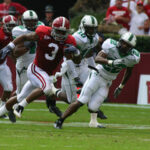Over the course of 15 years as a private school director, I received more applications by students that were diagnosed with Attention Deficit Disorder than any other learning disability.
Most of those students did not have Attention Deficit Disorder but an Emotional Disability.
At our school, out of about 100 students that had been diagnosed with Attention Deficit Disorder by their previous schools, only 1 student turned out to have a true attention deficit disorder.
The challenge in diagnosing a child with an attention deficit disorder lies in the fact that there is no standard diagnostic test for ADD. A diagnosis for an attention deficit relies on the observations of parents, of teachers, counselors, and other caretakers of a child. Because there is no measurable test for ADD, all of those observations are subjective, not objective.
As a private school director, it was my policy to meet the child before I would ‘meet’ a child’s paperwork. Unlike school principals of bigger schools, I had the opportunity of interviewing each potential new student and his or her parents personally. Even though one meeting cannot provide a complete insight into a child’s learning disability, those first few moments can often reveal more than any paperwork.
My initial interview not only focused on a student’s academic skills but also on the child’s ability to maintain attention during the interview, the child’s physical behavior, the child’s ability to sit still or stand still for a period of time, the ability to follow directions, the ability to listen instead of talk, and the ability not to interrupt.
As a former trained support group facilitator, I also looked for the child’s body language, the child’s ability to use “I” messages, the child’s eye contact with me or the child’s parents, and, most of all, the child’s reaction to our school’s unique environment.
True attention deficit disorder does not limit itself to academic tasks but also to tasks like feeding animals (horses, goats, llamas, ostriches, a donkey, a bull, sheep, rabbits, cats, dogs), like exploring a vast variety of inside as well as outside games, a vast variety of art, music, or computer programs.
Most school principals do not have the luxury of observing a student feeding a white bull, a goat, or an ostrich. Most principals do not have the pleasure of observing a student playing his or her first piano song. Most principals also do not have the luxury of being able to witness a child’s discovery of an amazing talent and ability. For over 15 years, I had that luxury.
By being able to observe my students’ amazing abilities, I was much better able to see their unique disabilities.
Attention Deficit Disorder, Dyslexia, and Emotional Disabilities share many of the same symptoms. The inability to maintain attention, impulsive behaviors, physical and motor restlessness, not paying attention, making careless mistakes, not listening, not finishing tasks, not following directions, being easily distracted, fidgeting, talking excessively, running around at inappropriate times, interrupting others, and having difficulty awaiting turns are not only the symptoms of Attention Deficit Disorder – those are also some of the symptoms that accompany Dyslexia, and Emotional Disorders.
While Dyslexia is to some degrees easier to distinguish from Attention Deficit Disorder because of a student’s challenges with reading and writing, it is extremely difficult to distinguish Attention Deficit Disorder from Emotional Disability unless you have the kind of environment that our school used to provide.
In order to distinguish whether a student is dealing with an attention deficit disorder or an emotional disability, it is sometimes helpful not to look at the disability but the ability of a child.
Students with ADD have the ability to focus on a multitude of tasks simultaneously, to see ordinary things in extraordinary ways, to display unique personal observations and insights, to find a new approach to problems or issues, to make sudden and astonishing connections, to come up with non-conformist independent ideas, and to have a keen awareness of any sights, sounds, or movement. These are the traits of explorers, inventors, and scientists.
In contrast to children with ADD, students with an Emotional Disability have the ability to feel and perceive emotions at the highest and deepest levels. Children with ED are highly intuitive, imaginative, and expressive. Many students with an emotional disability have the potential to become a writer, poet, musician, composer, singer, sculptor, painter, actor, or to pursue a profession in a holistic field.
Unfortunately, most parents prefer their child to have an attention deficit disorder rather than an emotional disability.
Like Attention Deficit Disorder, there is a genetic predisposition for an Emotional Disability. After getting to know my students’ amazing academic as well as non-academic abilities, I was much better able to understand and accommodate their disabilities. Not to my surprise, those disabilities were not confined to just one generation but to several generations. Broken families, broken relationships, alcohol or drug abuse, unfulfilled destinies, untaken professional paths, and suicide were the price paid for an undiagnosed emotional disability or emotional ability.





